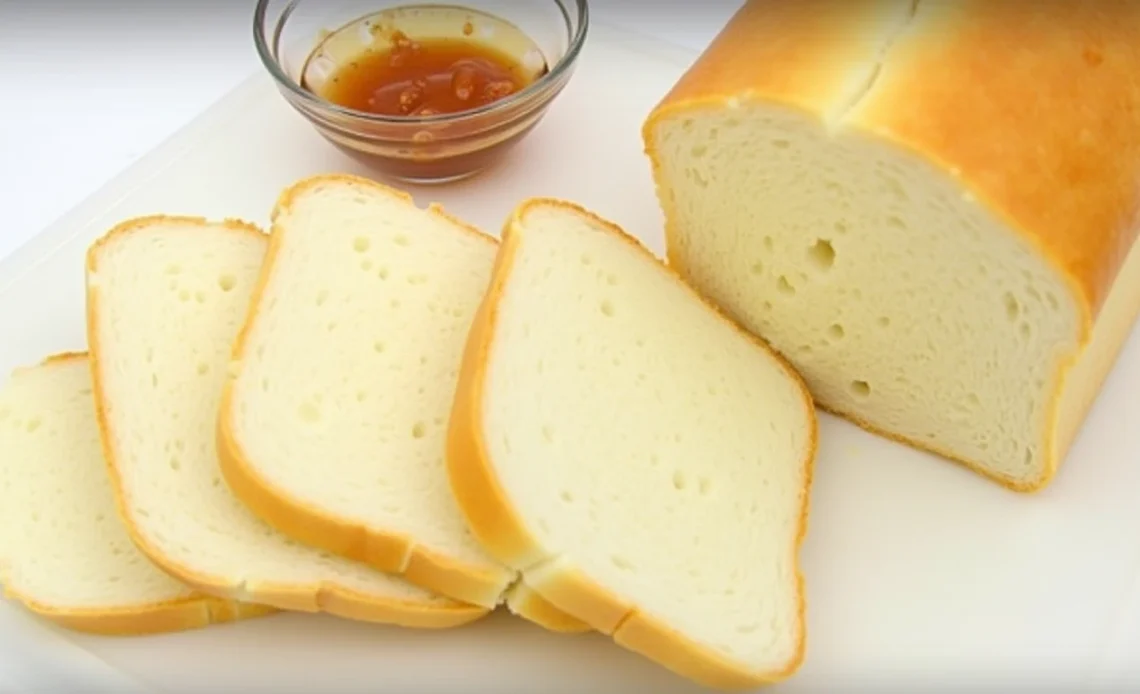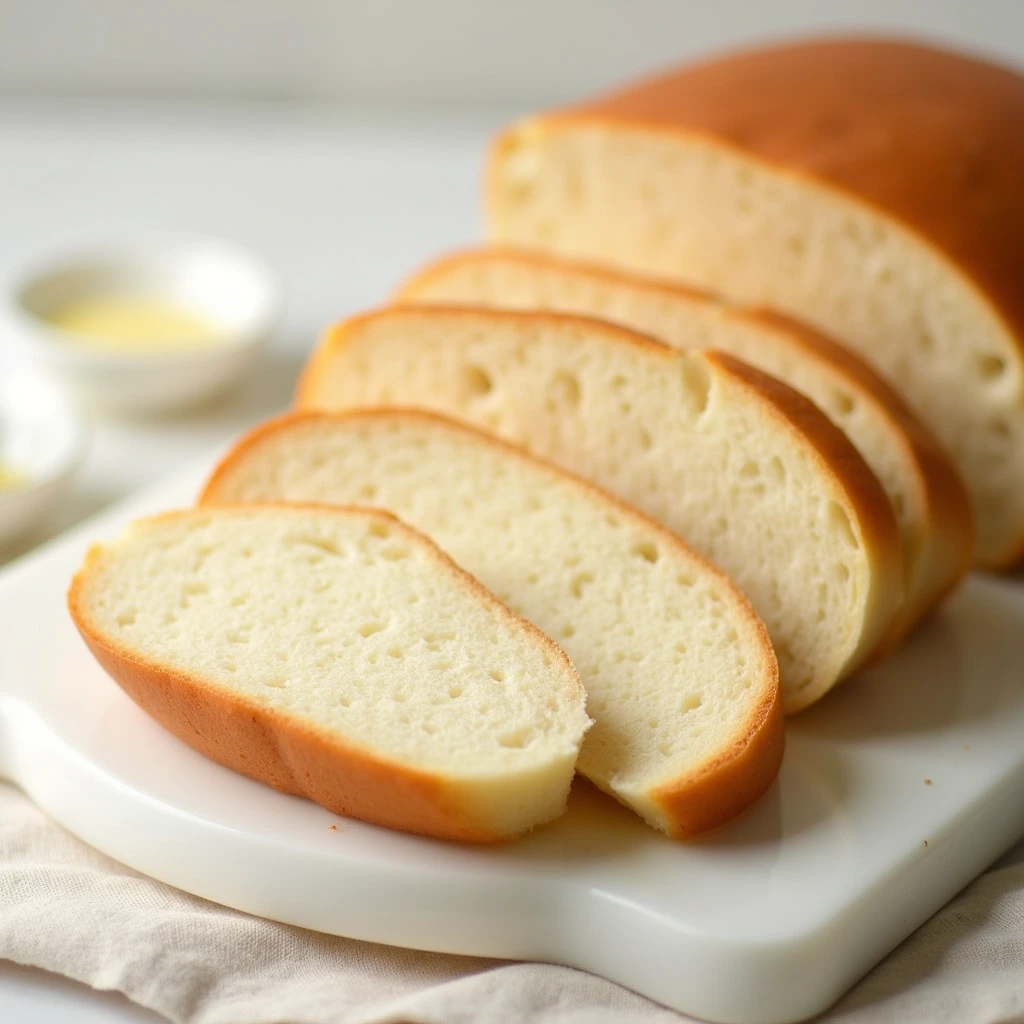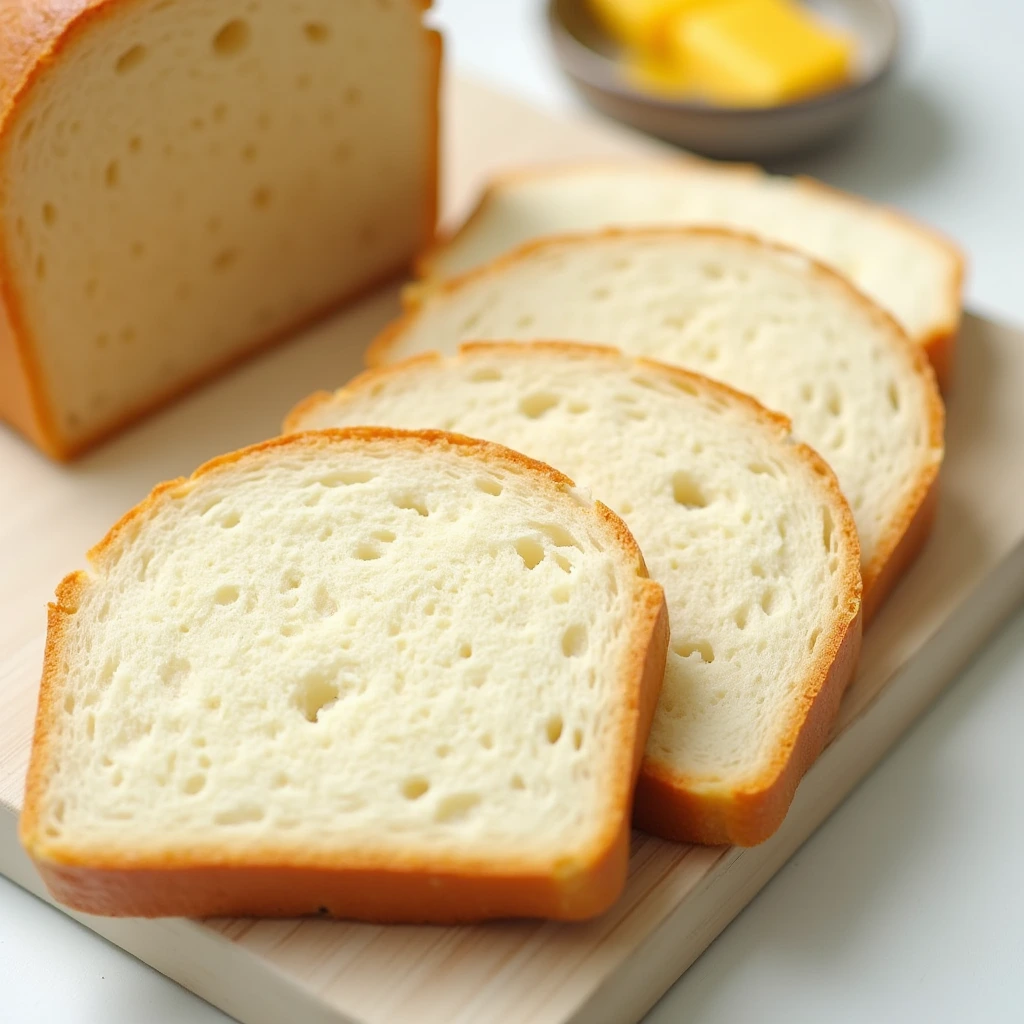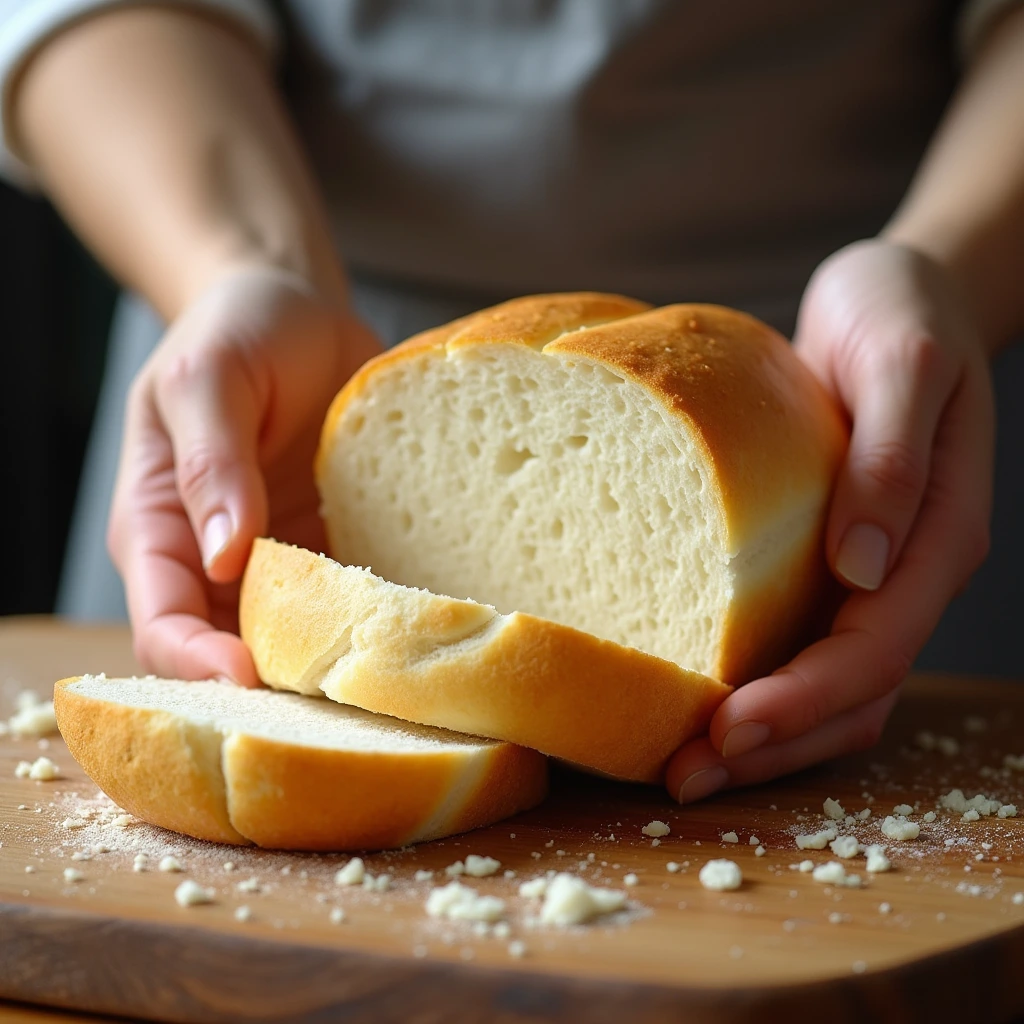
Japanese cuisine is renowned for its unique flavors and textures, and one of the most beloved items from Japan’s bakery culture is Shokupan, or Japanese Milk Bread. This soft, pillowy bread has taken the world by storm, gaining popularity due to its delicate sweetness, airy texture, and versatile nature. Often served in Japanese bakeries or at home as a staple food, this bread is a perfect accompaniment to breakfast, sandwiches, or simply enjoyed with butter.
In this article, we’ll dive into a detailed Shokupan Recipe, explore the origins and ingredients of this Japanese bread, and even discuss the necessary tools like the Pullman Loaf Pan to help you achieve that bakery-style loaf.
What is Shokupan?
Shokupan is a type of Japanese Milk Bread, made from simple yet quality ingredients such as milk, flour, yeast, and sugar. Its distinguishing feature is its soft and fluffy texture, which comes from a special technique called the tangzhong method, or water roux, often used in Asian bread-making. This method involves cooking a portion of the flour and water (or milk) into a paste before incorporating it into the dough. This paste helps trap moisture, giving the bread its incredibly soft, moist, and long-lasting texture.
Shokupan is commonly seen in Japanese bakeries, often sold in rectangular loaves that are soft enough to slice easily. It’s typically served plain or toasted, sometimes with a bit of jam or butter. It’s also a popular choice for sandwiches due to its pillowy texture, making it the perfect bread for any filling.

The History of Shokupan and Japanese Milk Bread
The origins of Shokupan trace back to the influence of Western bread-making in Japan during the Meiji Era (1868-1912), when Western foods began to make their way into Japanese cuisine. As bread became more popular in Japan, bakeries began creating their own versions, adapting recipes to local tastes and ingredients. Shokupan was one such creation, drawing inspiration from European bread-making but focusing on a softer, more delicate texture that suited Japanese palates.
While the name “Shokupan” literally means “eating bread,” it’s also referred to as rice bread in some contexts, because the bread is often soft and slightly sweet, reminiscent of the gentle sweetness found in rice-based foods in Japan.
Why is Shokupan Special?
There are several reasons why Shokupan stands out from other bread varieties. First and foremost, its soft, fluffy, and slightly sweet texture is unlike any other bread. The moisture-retaining technique of the tangzhong method is a key contributor to this texture, allowing the bread to stay soft for several days.
Another notable aspect of Japanese Milk Bread is its sweetness. It’s not overly sweet like cake, but it has a mild sweetness that balances perfectly with savory or sweet toppings. This bread is incredibly versatile—whether you spread a little jam on a slice or use it for making a hearty sandwich, it works wonderfully with both.
Additionally, the bread’s fine crumb and smooth, soft crust give it a distinct look and feel that sets it apart from other loaves of bread. This is where the Pullman Loaf Pan comes into play. Often used in Japanese bakeries, this special rectangular pan helps give Shokupan its characteristic square shape and soft crust.
Ingredients for Japanese Milk Bread (Shokupan Recipe)
To create your own delicious Milk Bread Recipe at home, you will need a few simple ingredients. These include:
- Bread Flour: Bread flour has a higher protein content than regular all-purpose flour, which helps create the chewy, soft texture that Shokupan is known for.
- Whole Milk: Milk is the key ingredient that gives this bread its tender texture and mild sweetness.
- Active Dry Yeast: Yeast is the leavening agent that helps the dough rise and gives the bread its airy, fluffy texture.
- Sugar: A small amount of sugar adds sweetness to the bread without overpowering its subtle flavor.
- Salt: A pinch of salt is essential to balance out the sweetness and enhance the flavors.
- Butter: Butter adds richness and tenderness to the bread, ensuring it stays soft and moist.
- Water: Water is used to make the tangzhong, a paste that helps retain moisture in the bread and ensures it stays soft for days.

For the tangzhong method, you’ll need:
- Flour (used in the tangzhong paste)
- Water or Milk (to mix with the flour to form the paste)
Step-by-Step Shokupan Recipe
Now that we’ve covered the ingredients, let’s dive into the steps for making your very own Japanese Milk Bread.
1. Make the Tangzhong (Water Roux)
- In a small saucepan, combine ¼ cup of bread flour with ½ cup of water or milk. Stir the mixture continuously over medium heat until it thickens into a smooth paste. This should take about 3-4 minutes.
- Once the paste has formed, remove it from the heat and let it cool to room temperature. This is your tangzhong.
2. Prepare the Dough
- In a large mixing bowl, combine 3 ½ cups of bread flour, ¼ cup of sugar, and 1 ½ teaspoons of salt.
- Add 1 packet of active dry yeast to the dry ingredients and mix well.
- In a separate bowl, combine 1 cup of whole milk and 2 tablespoons of softened butter. Warm it slightly in the microwave to help the butter melt.
- Add the cooled tangzhong to the milk-butter mixture and stir.
- Gradually pour the wet ingredients into the dry ingredients while mixing to form a dough.
- Knead the dough for about 8-10 minutes until it becomes smooth and elastic. If the dough feels too sticky, add small amounts of flour as needed.
3. First Proofing
- Once the dough is kneaded, shape it into a ball and place it in a lightly greased bowl. Cover it with a damp towel or plastic wrap.
- Let the dough rise for about 1-1.5 hours or until it has doubled in size.
4. Shape the Dough
- After the dough has risen, punch it down to release any air bubbles. Divide the dough into three equal portions and shape each portion into a ball.
- Roll each ball into a long oval shape, then fold each side inward to create a log-like shape. Place the logs side by side in a greased Pullman Loaf Pan.

5. Second Proofing
- Cover the pan with a damp towel or plastic wrap and let the dough rise again for 45 minutes to an hour, or until it has puffed up and fills the pan.
6. Baking
- Preheat your oven to 350°F (175°C). Once the dough has risen, place the Pullman Loaf Pan in the oven and bake for 25-30 minutes or until the top is golden brown.
- To check for doneness, tap the bottom of the loaf. If it sounds hollow, it’s ready.
- Remove the bread from the pan and let it cool on a wire rack before slicing.
Tips for Making Perfect Shokupan
- Use High-Quality Ingredients: Since Shokupan relies on simple ingredients, using the best quality flour, butter, and milk will make a big difference in the final result.
- Proper Proofing: Be sure to allow the dough ample time to rise during both proofing stages. Under-proofed dough may result in a dense texture.
- Pullman Loaf Pan: For the classic square shape, use a Pullman Loaf Pan with a lid. This will help the dough rise evenly and prevent it from expanding too much, resulting in that smooth top and soft crust.
- Tangzhong: Don’t skip the tangzhong! It’s the key to achieving that soft and moist bread. It also helps keep the bread fresh for longer.
Serving Suggestions
Shokupan is incredibly versatile and can be served in numerous ways. Here are some of our favorites:
- Sandwiches: Shokupan makes for the perfect sandwich bread. Fill it with anything from ham and cheese to egg salad or grilled vegetables.
- Toasted with Butter: Slice and toast a piece of Shokupan with a pat of butter for a simple, delicious treat.
- Sweet Toast: For a more decadent option, spread a little jam, honey, or Nutella on top for a delightful breakfast.
- French Toast: Use thick slices of Shokupan to make the fluffiest French toast. The bread’s softness soaks up the egg mixture beautifully.
Why Shokupan is Worth the Effort
Making Shokupan at home may take some time and patience, but the result is undoubtedly worth it. The soft, fluffy texture and delicate sweetness of Japanese Milk Bread are unmatched by any store-bought bread. Plus, there’s a sense of satisfaction in creating something so beloved from scratch. With the right techniques and tools, you can bring the taste of Japanese Bakery right to your kitchen.
Whether you’re using it for sandwiches, enjoying it with a cup of tea, or just having it plain with a spread of butter, Shokupan will quickly become a favorite in your bread repertoire. So grab your Pullman Loaf Pan, gather your ingredients, and give this delicious Shokupan Recipe a try—you won’t regret it!




